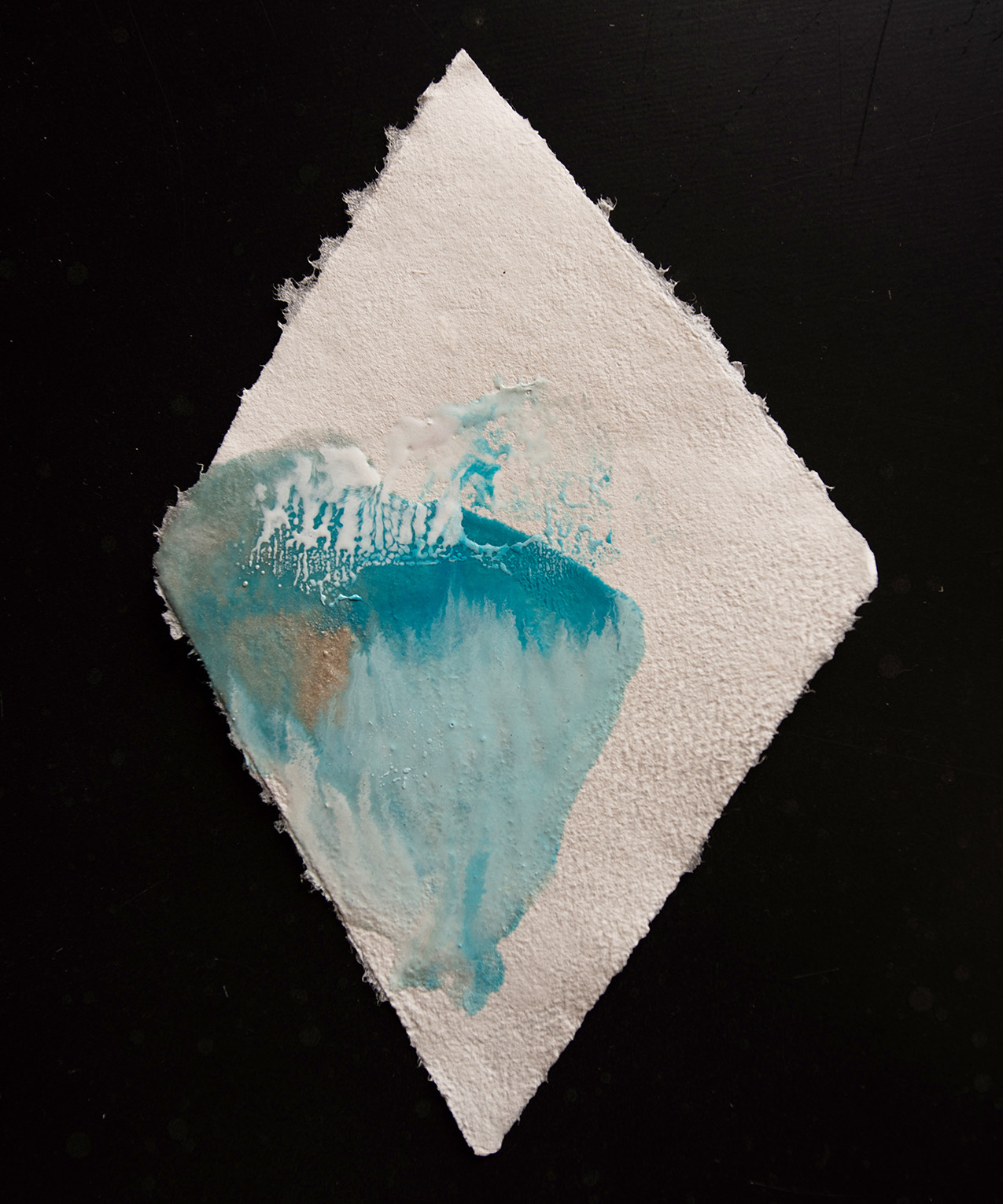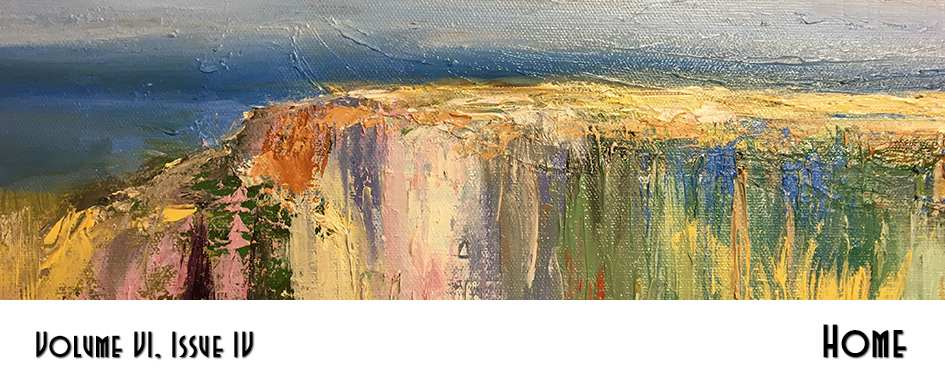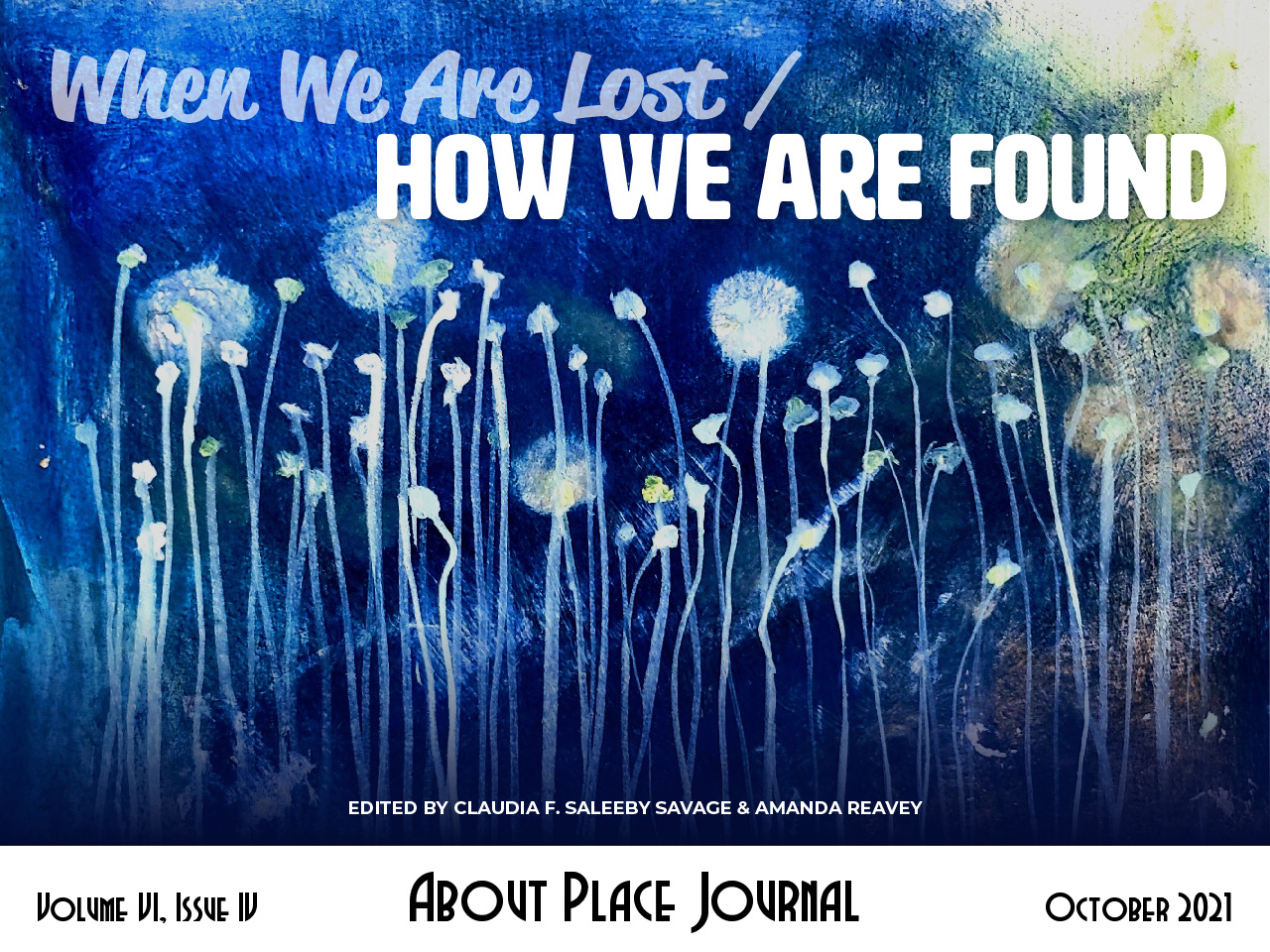

I was inspired to create this piece based on my travels to the Greenland Ice Sheet—an ice sheet is a glacial mass of over 20,000 square miles. The Greenland Ice Sheet is the second largest in the world next to Antarctica. Greenland’s is different from Antarctica’s in several respects: it’s melting at a more rapid rate than Antarctica, and, unlike Antarctica, Greenland is populated by Indigenous people who have used the effects of the ice to survive since time immemorial.
In 2018, I was traveling along the Greenland Ice Sheet by dogsled with East Greenlandic hunters and a British guide. We came to the edge of the sea ice and one of the hunters pointed to his village of Sermiliqaq. He said he once looked forward to winter because he and his family could travel by dogsled between Sermiliqaq and the neighboring villages of Kulusuk, Tinniteqilaaq, and Tasiilaq, where his extended family lived. Traveling the sea ice by dogsled is quick and easy. It means community, family, friendship. Now it was more difficult to access neighboring villages in winter because for the past ten years or so, the ice hasn’t frozen over. The melting ice means social isolation.
Sheets of paper have been a feature of my life since I was a child. My grandfather worked in a paper factory outside of Portland, Oregon, his whole life and supplied me with paper for drawing and writing stories. My mother taught me to create handmade paper as a child on the shores of the Pacific Ocean. As an adult, I became a writer and a hand papermaker. The process of hand paper making is meditative and slow. I love it for its physicality and its feminist origins: paper is thought to have been “invented” in the Han Dynasty in China by laundry women who used lint from clothes and pulled the first sheets.
I made these paper sheets of the Greenland Ice Sheet at Women’s Studio Workshop in New York. I first carved foam inserts to fit my mold and deckle in order to create fragments or “bergie bits.” Bergie bits are a type of ice that forms when ice bergs shatter and scatter in a fjord or the open sea. As I worked, I was thinking of the bergie bits I saw in the fjord between Sermiliqaq and Kulusuk and the hunter’s story.
Traveling the Greenland Ice Sheet, or even one of the many glaciers flowing from the sheet, fills me with awe. According to the National Snow and Ice Data Center, “the Greenland Ice Sheet extends about 1.7 million square kilometers (656,000 square miles), covering most of the island of Greenland, three times the size of Texas.” The Greenland Ice Sheet is losing mass rapidly, but when I stood on it, it seemed massive and indestructible. By creating bergie bits, or fragmenting glaciers, out of handmade mulberry paper, I was able to emphasize the ice sheet’s fragility. My paper doesn’t contain much bonding agent. If I soak it in water, it dissolves quickly.
The other material at work here is encaustic, an ancient painting method using beeswax, resin, and, in this case, handmade pigment. The beeswax calls attention to the dwindling bee population. This practice also contains the paradox of using melting wax to create sheets of paper that resemble melting ice sheets, not to mention the carbon footprint I made by traveling repeatedly to Greenland from Idaho.
Finally, it’s tempting to upload gorgeous photos of the Greenland Ice Sheet and its glaciers. One can find them everywhere online. But along with the reality of climate change, we live in a world dominated by pixels. Our wired engagement with ice sheets can actually estrange us from them by presenting them as abstract aesthetic experiences. My fragments created with handmade paper, pigment, and hot beeswax are meant to tell the story of the beauty and ephemerality of ice sheets in a way that evokes intimacy and care, even if they have to be displayed digitally.


